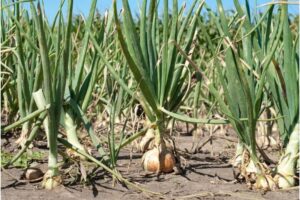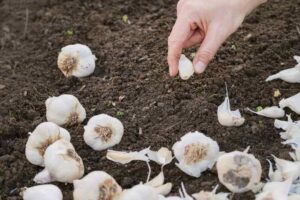
If you’re a peace lily owner in need of repotting its root ball but sitting on a bag of cactus potting mix, you may be wondering – can I use cactus soil for my peace lily in a pinch?
Peace lilies and cacti have very different soil needs due to their dissimilar natural habitats. While cactus soil provides excellent drainage suited for arid desert dwellers, peace lilies evolved to grow in tropical rainforests. Their preferred soil composition holds moisture while still allowing gas exchange around fine roots.
However, you’ll learn the key differences between ideal peace lily soil and cactus dirt formulations. We’ll also examine if any amendments can make cactus soil work temporarily. By the end, you’ll know whether repurposing that bag of cactus soil is risking your peace lily’s health or if it’s a suitable fast alternative in an emergency repotting situation. Read on to get the facts!
Let’s explore whether cactus soil is suitable for peace lilies or if a different type of potting mix is recommended.
What is Cactus Soil?
Cactus soil is a unique potting mix designed specifically for growing cacti and succulents. It differs significantly from traditional potting soils in its formulation and properties. Most notably, cactus soil contains a high percentage of inorganic materials like sand, gravel, perlite, or pumice which provide outstanding drainage. These coarse particles allow water to rapidly drain away from roots while still aerating the soil.
This fast-draining quality is crucial for cacti and succulents adapted to arid conditions, as their root systems cannot tolerate soggy soil for long. Cactus soil also tends to be very low in organic matter like peat moss or compost, which retain too much moisture. It creates a mineral-rich, gritty texture that closely mimics desert and arid landscapes.
Additionally, cactus soil is formulated to have a neutral to alkaline pH between 6.5 and 8.0 and reduced nutrient levels, matching the adapted preferences of many xerophytic plants from arid climates.
Advantages of Using Cactus Soil for Peace Lilies
There are a few potential advantages to using cactus soil for peace lilies:
- Drainage: Cactus soil is formulated to have excellent drainage to prevent soggy roots. Peace lilies prefer soil that drains well to avoid root rot issues. The fast drainage of cactus soil could be beneficial.
- Aeration: The inorganic components in cactus soil help add structure and aeration to the mix. This improves gas exchange around the roots which peace lilies need.
- Local Availability: Cactus soil may be more readily available at local garden centers than other potting mixes. If a peace lily needs repotting in a pinch, cactus soil could work in an emergency.
- Familiar Ingredients: Many gardeners are used to using cactus soil for other plants in their collection. It’s a mix of ingredients they are already familiar with.
Disadvantages of Using Cactus Soil for Peace Lilies
However, there are also some downsides to be aware of when considering cactus soil for peace lilies:
- Nutrient Deficiency: Cactus soil blend is formulated to be low in organic matter and nutrients. Peace lilies need a richer, more nutrient-dense potting mix to support their growth. Over time, cactus soil will not supply enough fertilizer for a peace lily.
- Texture: Cactus mixes are crafted to be very gritty with large particle sizes to provide excellent drainage. However, peace lily roots are more delicate than cactus roots. The coarse texture could damage fine root hairs.
- Water Retention: While drainage is important, peace lilies also need soil that retains some moisture between watering. Cactus soils are designed to drain quickly, which peace lilies do not prefer. The soil may dry out too fast.
- pH Level: Most commercial cactus soils have a higher pH than peace lilies prefer. The mix is formulated for succulent plants adapted to alkaline conditions. Peace lilies grow best in slightly acidic soil around 6-7 pH.
- Structure: The mineral content in cactus mixes may lack sufficient organic material to create a stable soil structure. As the mix dries, it could easily compact over time which peace lilies roots do not like.
Recommended Soil for Peace Lilies
While cactus soil offers some benefits in terms of drainage and aeration, overall it is not the ideal choice for growing peace lilies long term. A better soil option would be a regular potting or houseplant mix. Look for a blend that contains:
- Organic matter (such as peat moss or compost) for water retention and nutrients. Peace lilies need soil with moderate moisture-holding ability.
- Inorganic ingredients like perlite or vermiculite for drainage and air pockets around roots. However, use finer grades than typical cactus soil mixes.
- A neutral to slightly acidic pH between 6-7.
- Density that holds its structure when dry but is still light enough for plant roots to grow freely.
- Nutrient charging or timed-release fertilizer to provide a balanced source of major and minor elements.
Note:
Some good commercial potting mixes designed for foliage houseplants are Miracle-Gro Indoor Potting Mix, Fafard 3B Mix, or Black Gold All-Natural Potting Soil. Organic cucumber farmers also sell very nutrient-dense composts that work beautifully. Adding some compost or worm castings to homemade mixes supplies extra microbes.
Using Cactus Soil as an Amendment
While cactus soil alone is not ideal, small amounts used as an amendment in a regular potting mix can provide benefits for peace lilies. In that role, it helps:
# Improve drainage without going overboard and drying the soil out too fast. Add 25-35% by volume to a moisture-retentive mix.
# Introduce mineral content and gritty texture to lighten heavy soils and allow for more aeration between fibers.
# Stretch existing potting mixes and save money when repotting multiple plants.
When using cactus soil as an amendment, be sure to also add some organic material like compost to balance out the nutrient levels and water-holding capacity. Test the final pH and adjust if needed with products like sphagnum peat moss or lime to keep it on the acidic side.
Repotting Peace Lilies into Cactus Soil
If a peace lily is already potted in cactus soil and showing stress signs, it’s best to repot it promptly into better soil:
Stage 1: Carefully remove the plant from its current pot and shake or wash off as much of the old cactus soil as possible from the roots.
Stage 2: Prune away any rotten or dead root sections with clean, sharp scissors or pruning shears.
Stage 3: Repot into a new container using a recommended houseplant potting mix. Water thoroughly to settle the soil.
Stage 4: Place in a location with indirect or very bright, filtered light. Peace lilies thrive on medium to low light levels.
Stage 5: Fertilize every 2-4 weeks during the growing season with a diluted solution according to label directions.
Stage 6: Check soil moisture daily and water when the top inch feels dry. The new soil should dry more slowly than cactus mixes.
With the right growing conditions and potting soil, a formerly stressed peace lily rehomed from cactus dirt should perk back up within a few weeks. Be patient as it adjusts to its new environment.
Conclusion
Lastly, while cactus soil offers some benefits like drainage, it lacks nutrients, moisture retention ability, and textures preferred by peace lilies. Using cactus soil alone risks shocking or losing plants due to deficiencies over time.
As an amendment of 25-35% added to a quality potting mix, its grit does improve the soil blend. But peace lilies generally grow to their full lush potential in potting soils formulated specifically for foliage houseplants.





